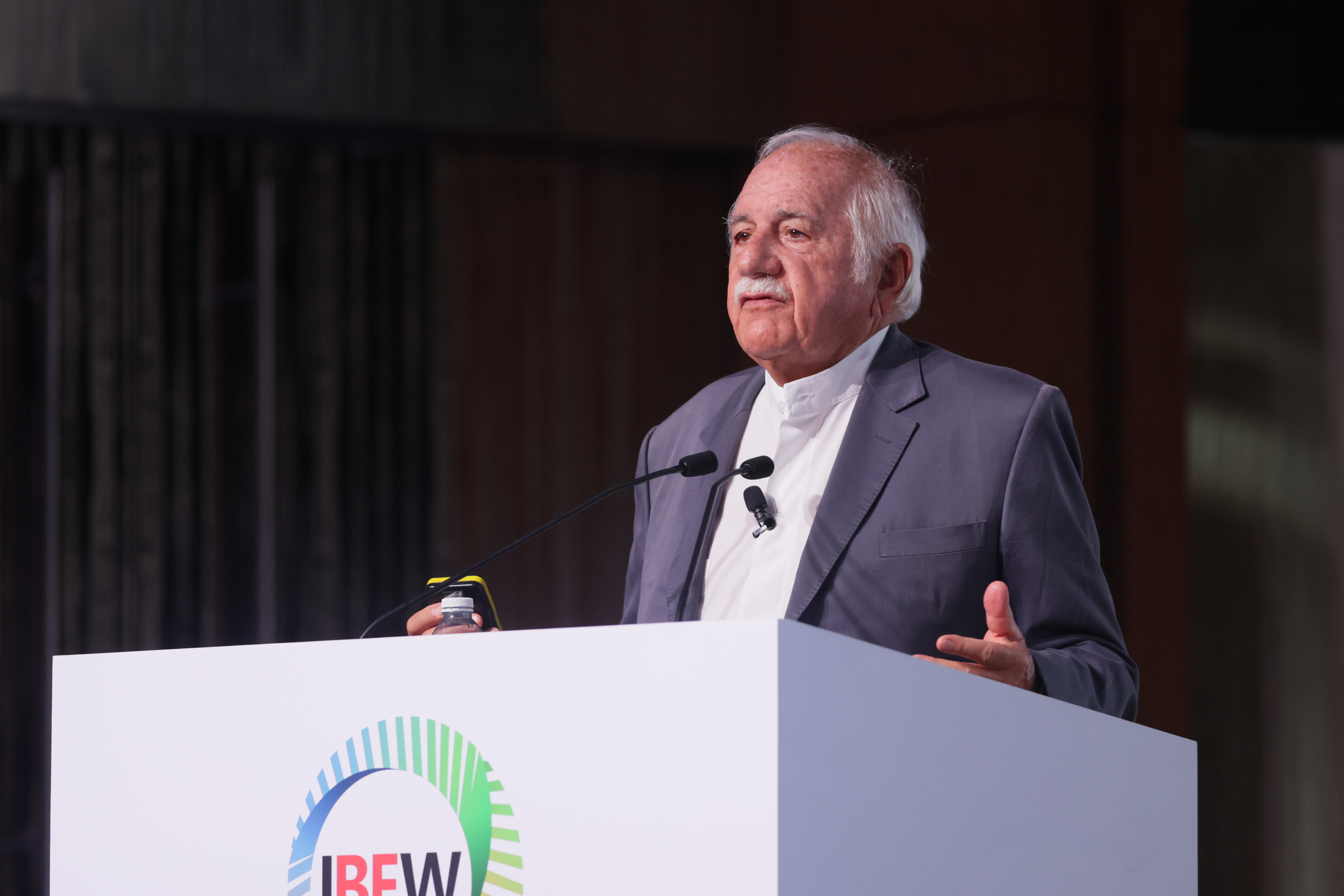Along Singapore’s waterfront promenade at Marina Bay Sands (MBS), the calm blanket of water is a perfect complement to the magnificent blocks of glass and steel of the integrated resort. As the temperature rises, these towering buildings also provide respite from the heat.
Over at the Shoppes at MBS, nature makes an impact indoors too, as radiant daylight shines through the glass-panelled roof and illuminates the gargantuan shopping mall.
Designed to blend both the indoor and outdoor, and provide a seamless flow of life between the two spaces, the iconic building perfectly illustrates how architecture and nature can combine to create a beautiful space – the very ideal of its designer, world-renowned architect Moshe Safdie.
“We should not see architecture and nature as diametrically opposed. It is possible to integrate the two (in our design),” said the 84-year-old, who was giving the keynote speech on the first day of the International Built Environment Week 2022.
He also pointed out that as architects pivot their focus to address sustainability in response to a worsening climate, other issues have been overlooked. “We have neglected another aspect of the environment – quality of life issues,” he said.
|
|
 Architect Moshe Safdie, Founder of Safdie Architects
Architect Moshe Safdie, Founder of Safdie Architects
|
|
DENSIFICATION WOES
This failure to consider quality of life in design has been particularly evident in the problem of densification. Fuelled by rising land value and the private sector’s ambitions to maximise their profits, architects are often pressured to house more people within the buildings they design. This comes at the expense of liveability.
“We are, as architects, constantly facing this request: Can we do this or that to possibly increase the density?” observed Mr/Ar. Safdie.
Especially in land-scarce Singapore, he noted that densification is a pertinent issue that “threatens our very identity” and has been “eroding our quality of life”. This problem is especially clear in work spaces.
For instance, office buildings are usually made with a sealed window system to accommodate as many occupants as possible – at the expense of fresh air and natural light. Workers are often confined to a gloomy and stuffy box.
“With zero outdoor and recreational space, the workplace needs to be critically re-examined. We need to work hard to create environments that are conducive for creativity and that people want to spend time in,” said the Israeli-Canadian architect.
People are not the only victims of densification. As buildings stack higher and congregate closer, the environment ends up on the losing end too. Green spaces gradually become far and few within, threatening to transform cities into barren concrete jungles.
With these consequences in mind, Mr/Ar. Safdie posed this searching question: “Are the densities we are now building necessary?”
Every building, he pointed out, has an optimal density. Projects with a higher density are costlier in terms of resources and energy required to satisfy quality of life ambitions, since more occupants need to be provided for.
But it is actually easier and cheaper to design a building with a comfortable density and good quality of life – finding that balance allows for both efficiency and comfort. “We do not need to go to the extremes, but to find the in-between,” he said.
MARVELLOUS MATRIMONY
Mr/Ar. Safdie’s solution to this is simple: marry architecture and nature.
He highlighted the example of the Surbana Jurong Campus, a project by his firm Safdie Architects, to prove his point. Set for completion in 2023, this building is filled with green spaces that will house both plants and people. The proliferation of daylight throughout the complex ticks another important box in the quality-of-life checklist.
His example is timely, with Singapore launching the refreshed Built Environment Industry Transformation Map on the same day.
One of its key pillars – Sustainable Urban Systems (SUS) – looks to develop not just a sustainable but also more liveable built environment for all. This aligns with Mr/Ar. Safdie’s vision of balancing architecture and nature to achieve better liveability.
This “nature in design” principle can be applied to residential areas too. Sky Habitat, a private condominium in Bishan, features open spaces connected with bridges that allow residents to relax amid lush greenery – a huge plus during the COVID-19 pandemic.
“I had many residents reaching out to me telling me that they really enjoyed the open spaces during the pandemic,” shared Mr/Ar. Safdie, who designed Sky Habitat.
Jewel Changi Airport is another iconic project of Safdie Architects that integrates nature into the built environment. Envisioned as a marketplace and park combined into a singular experience, the popular mall is a forerunner of its kind which he hopes will inspire future projects.
"We need to be implementing this same idea in the centre of cities where intense activities are taking place to integrate plant life," he said.
"As an industry, we need a new paradigm for sustainable design."